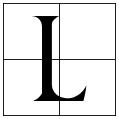Member-only story
Operation Dark Harvest — The story of Scotland’s ‘Anthrax Island’
And how the future of Gruinard Island was saved by an unlikely bioterrorism plot
 Less than a mile offshore, high in the Scottish Highlands, lies Gruinard Island (pronounced “grin-yard”). This unprepossessing slab of rock and heather, barely more than a mile long and half a mile wide, was once one of the most notorious and deadly sites in the U.K.
Less than a mile offshore, high in the Scottish Highlands, lies Gruinard Island (pronounced “grin-yard”). This unprepossessing slab of rock and heather, barely more than a mile long and half a mile wide, was once one of the most notorious and deadly sites in the U.K.
The history of Gruinard Island
The earliest reference to Gruinard Island comes from Donald Munro. The “Dean of the Isles,” as he was named, travelled the Hebrides (“heh-bruh-deez”) from 1549. There are hundreds of islands in this archipelago, scattered all along the western coast of Scotland. In 1774, Munro’s notes of his voyages were published as A Description of the Western Isles of Scotland called Hybrides, and included reference to Gruinard.
“GRUYNORDE. Northwarte frae this ile lyes the ile of Gruynorde, maire nore ane myle lange, full of wood, guid for fostering of thieves and rebellis. It perteins to M’Enzie.”¹
Gruinard. Northward from this isle lies the isle of Gruinard, not more than a mile long, full of wood, good for fostering thieves and rebels. It pertains [belongs] to [the clan] McKenzie.
